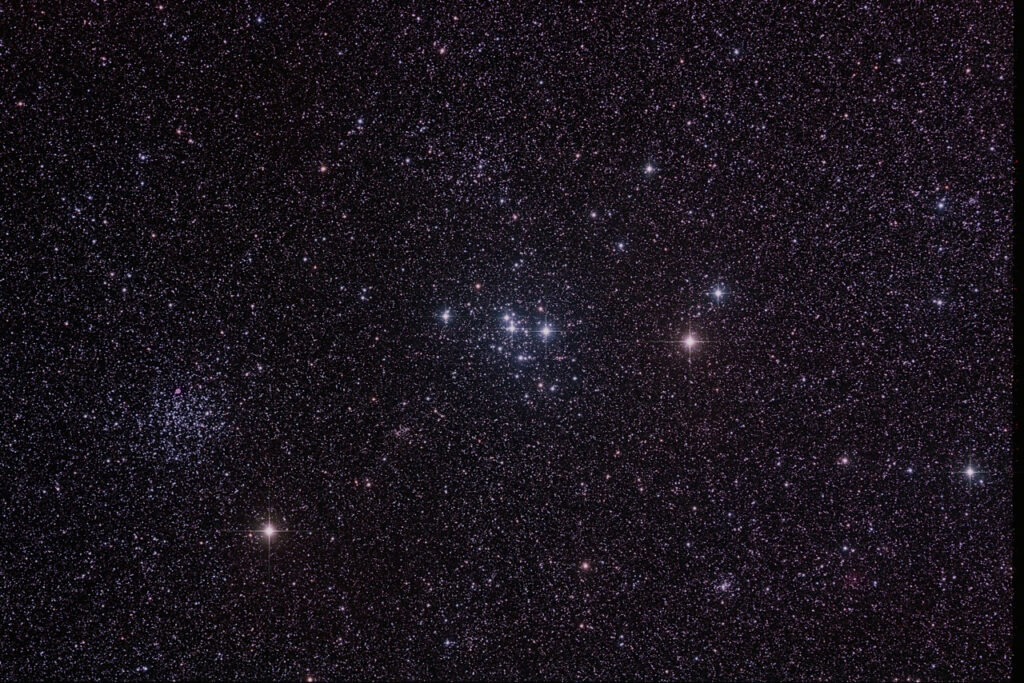The names and boundaries of the constellations have changed significantly over the millennia. The ancient Greek astronomer Ptolemy (2nd century AD) cataloged 48 constellations, one of which was Argo Navis. This enormous constellation was located low in the southern sky in the Mediterranean at the start of the Spring navigation season, and fancifully depicted the mythical vessel "Argo" used by Jason of the Argonauts to search for the golden fleece. Countless ancient cargo ships followed in the wake of this vessel in the sky.
In the 18th century, Argo Navis was divided into three smaller constellations based on the original nautical theme: Puppis (the stern), Vela (the sails), and Carina (the keel). All three constellations are low in the southern sky in the northern hemisphere, but are readily visible overhead in the southern hemisphere.
The constellation Puppis is depicted in this image. It contains a number of notable objects, including the open star cluster "M46" seen near the left edge of this image. This round cluster contains up to 500 stars, and spans some 300 light years. The stars are relatively dim because of the cluster's distance (5,300 light years) from Earth. Note the small pink circle at the top of M46. This is planetary nebula NGC 2438. A planetary nebula consists of the remnants of a star that exploded thousands of years ago. We are witnessing the expanding shell from that explosion, illuminated by the very hot stellar remnant at its core. It is still unclear whether the exploded star was a member of this cluster. The best, and most recent, evidence suggests that it is.
In the center of image is open star cluster M47. This cluster is more irregularly shaped than M46, and its stars are brighter. This is because the cluster is onl 1,500 light years from Earth, or less than a third of the distance to the fainter stars of M46. This cluster has a population of some 50 stars, and is 10 light years across.
Just north of M47 in this image is the faint open star cluster NGC 2423, which lies at a distance of 2,500 light years from Earth.
The Puppis Star Field
Date Taken:February 22, 2015
Location Taken:Siding Spring Observatory, NSW Australia
Conditions of Location: Equipment Used:Takahashi FSQ106 4" apochromatic refractor, SBIG STL11000 camera
Processing Used:LRGB x 7 subs x 2 minutes for a total exposure of one hour, processed in Photoshop and Maxim DL
Distance from Location: Constellation:Puppis
Other Link:
